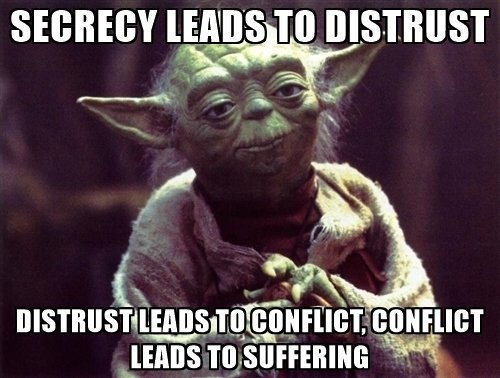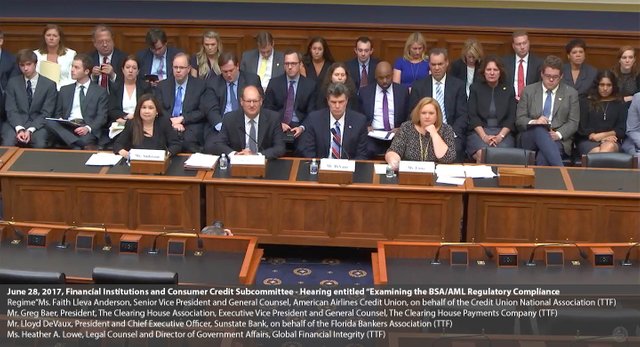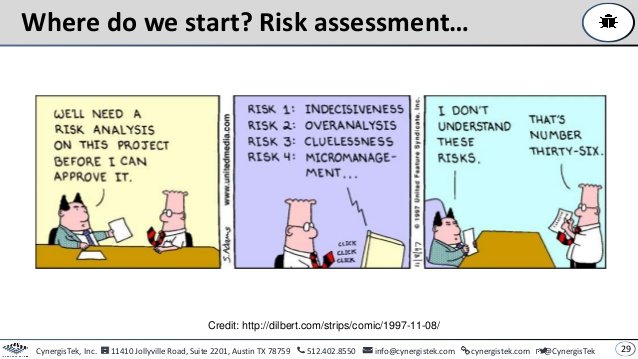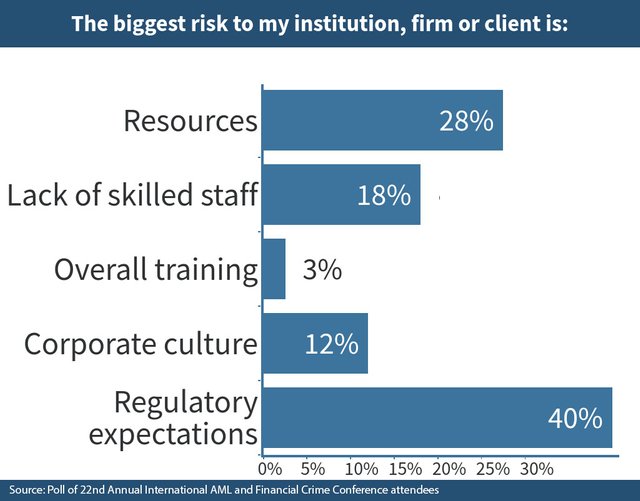De-risking is a trust problem blockchain is resolving today
Trust is the foundation of all of our relationships and much of our systems for that matter. What happens, then, when a system that relies on trust has no trust? The ability to be effective devolves, while increased skepticism and animosity between actors spirals downward into greater dysfunction.
In the case of de-risking, the blanket categorization of industries as too much liability to bank (and one all too familiar to MSBs), is actually a symptom of the underlying broken relationships between the MSB, bank, and regulator. Regulators support the depiction of the MSB, increase compliance measures, and ramp up their enforcement but without considering how the regulated will actually meet these expectations. The regulators are then surprised when banks implement de-risking practices that close MSB corridors, push transactions back to the even more opaque informal sectors, and diminish their abilities to trace money laundering — the activity the regulations were supposed to prevent!
A new hope?
The closing of accounts is supposedly behind us, and as Rob Ayers, founder of Fintech-Advisors, points out there are some glimmers of hope for opening new accounts. Smaller banks and charters are catering to the needs of MSBs filling the voids of the big ones. Progressive banks are rethinking their risk models and encouraging MSBs to apply. And regulators have made a greater effort to condemn de-risking.
Although positive, these are band aids that don’t get to the root of the problem. They make steps towards restoring trust but without changing the infrastructure. Both the fussy goodwill between parties and the ability for banks to afford the resource intensive compliance costs remain susceptible to political and economic changes. Trust is still too undependable and expensive.
In contrast, blockchain and other types of distributed ledger technology (DLT) are creating systems that efficiently and cost-effectively provide unprecedented amounts of verifiable information between MSBs, banks, and regulators that will be much more resilient. But before diving into this, let’s make sure we understand the fundamental trust issues in our current model.
A regulatory system based upon trust
Why do I say banking MSBs relies on goodwill? Say FIs do spend the time and money to properly onboard MSBs and re-validate their existing clients when regulators decide to add a new procedure (in the case of Customer Due Diligence), the upkeep required to ensure MSBs are providing complete and accurate compliance information is near impossible to consistently verify and monitor.
We know MSBs need to provide extensive information on each sender, recipient, and the details of the transaction, verify the given information, check whether or not customers are on any sanctions list, monitor the customers’ behavior for “suspicious activity”, and write reports accordingly. The AML, KYC, and CTF details are only given to the regulators when taxes are due where it is really only scanned for completion, basic continuity, rather than quality. The exception is if the MSB or their banking partners are audited, either randomly or because a flag is raised, in which case the process can take weeks to cover. Heavy fines are doled out for misconduct leaving regulators and banks to trust that MSBs are afraid of the audit enough to be compliant because there is no way to tell if stakeholders are being compliant in real-time.
These inherent unknowns in the system keep regulators suspicious of MSBs continuing to paint them as hazards even after acknowledging the need to keep MSBs banked as an integral part of their AML efforts. The active Federal Financial Institutions Examination Council BSA/AML Examination Manual (FFIEC Manual) written in 2014 goes as far to tell banks:
“To maintain account relationships with non-bank institutions like MSBs may expose them to a higher risk for money laundering activities because many MSBs do not have long-term customer relationships and require minimal or no customer identification, maintain limited or inconsistent record keeping on customers and transactions, engage in frequent currency transactions, and often change their product mix or location.”
Regulators have claimed banks are not responsible for this level of transaction depth conducted by the MSB, but the line in the sand is fuzzy at best. FinCEN made attempts to clarify this as they started to recognize the unintended de-risking and the subsequent AML problems their hard stance on compliance created. This includes a 2014 statement emphasizing that to follow BSA banks need to understand the operations and compliance program of MSB clients, but they are not expected to report misconduct for the day-to-day transactions of MSBs. However, BSA and FATF also assert that banks must monitor for suspicious activity and conduct due-diligence upon awareness, particularly with high risk entities like those that send international money transfers.
So banks are not responsible for MSB compliance violations, but they are also exposed to higher risk as a result of MSBs supposed lack of compliance? Even if a bank did not agree with this truly unfair portrait of MSBs, in a climate where compliance is being ramped up across all finance verticals, regulators are painting this broad brush. So why would the bank welcome the heightened scrutiny from banking MSBs? Especially for a segment of their business that makes single digit percentages of revenue?
The insatiable needs of the regulator
Regulators, looking to take a tough stance against terrorism since George W. implemented the Patriot Act in 2001, have been requiring increasing amounts of information on customers, agents, MSBs, and banks and the monitoring of their transactions. Although such data is important to tracing money laundering, regulators have had a history of failing to consider how these stakeholders will actually be able to deliver on such detailed information — and they still haven’t addressed their insecurity over the inability to verify whether or not the information provided is accurate likely causing more punitive and reactive measures.
What happens when there is little trust between the regulator and the regulated? Increases in requirements, fines, audits, and their enforcement are pulled in to induce fear of the regulator who may ratchet up any of these efforts at any moment. Regulators may genuinely keep their interpretations broad to adjust to the changing conditions of the money laundering landscape, but the unpredictability of the regulator is toxic to a system based on trust, which disintegrates into one of anxiety and ultimately adversary — between all parties. We see this in the biggest risk concerns for compliance teams: regulatory expectations and resources.
As a result, MSBs and banks are afraid of the regulator, which makes banks afraid to bank MSBs and MSBs afraid the bank won’t bank them. All while formal money transfer routes are eliminated, compliance costs grow, transactions are pushed into the hardly traceable recesses of the informal sectors, mistakes are hidden, responsibility is avoided, and cooperation — the ingredient actually required to trace money laundering and terrorist funding — is extinguished! Divide and you shall conquer.
Whether you want to villainize the banks, the regulators, or the bad-acting MSBs, we can agree this system does not work. Like the comic below illustrates, the separated pieces of rope makes cooperation futile. And this is certainly not sustainable. So what is a system that will?
Technology that can meet the regulator’s expectations
The truth is the amount of information regulators and banks need to trust the MSB is unattainable within the existing infrastructure. Even if the MSB manages to check all the boxes, there is no efficient way for the regulator to verify if the information is accurate and complete. Again, this keeps the regulator anxious and trust between them and the banks low.
What if there was a way for banks and/or MSBs to access trustworthy data that could be assessed in real-time for each transfer, this would include its KYC, AML, and CFT, in a way that seamlessly integrates into their systems?
This is how blockchain and other types of distributed ledger technology (DLT) are creating “trustless” systems. DLTs provide cryptographically secure third ledgers that are shared among relevant actors ensuring that what I see is what you see. As a result, unprecedented amounts of KYC and AML information are accessible between MSBs, banks, and regulators in real-time and cost-effectively that can increase the trust needed to thwart de-risking.
Sound too kumbaya to be true? There is actually an MSB blockchain-based solution that is already making headway geared towards the small to medium size MSBs most affected by de-risking.
We are far from the full potential integrating DLTs can have for compliance (will be discussed in a future article), but just by giving visibility to KYC information, banks that previously would not open accounts for MSBs are changing their tune with the integration of this solution for digital payments. Here are some of its features:
- Does not use Bitcoin
- MSBs can maintain their existing correspondent relations, while expanding their payout partner network in compliance
- An API is integrated without needing IT resources to maintain it
- White label mobile and desktop applications are affordably available, which allows MSBs to convert retail customers into online senders keeping and accepting business when customers are away from retail locations
- Sending countries include US, Canada, Singapore, UAE, and India, and the list is rapidly expanding
- 60+ countries available for payout
- Does not apply to cash payments, unfortunately, but it is making it easier for senders to make online payments with their white label solutions to reduce the reliance on cash
- Costs include $1000 monthly compliance and low one-time setup fee
If you’d like to learn more about this, please email me at [email protected] or fill out contact form where you can also signup for my newsletter and get updates on new blog posts .





Congratulations @yokip, you have decided to take the next big step with your first post! The Steem Network Team wishes you a great time among this awesome community.
The proven road to boost your personal success in this amazing Steem Network
Do you already know that awesome content will get great profits by following these simple steps, that have been worked out by experts?
Congratulations @yokip! You received a personal award!
Click here to view your Board of Honor
Congratulations @yokip! You received a personal award!
You can view your badges on your Steem Board and compare to others on the Steem Ranking
Vote for @Steemitboard as a witness to get one more award and increased upvotes!